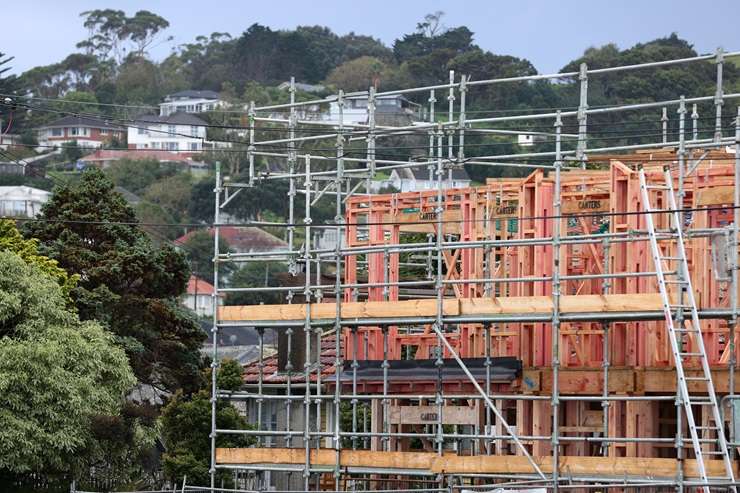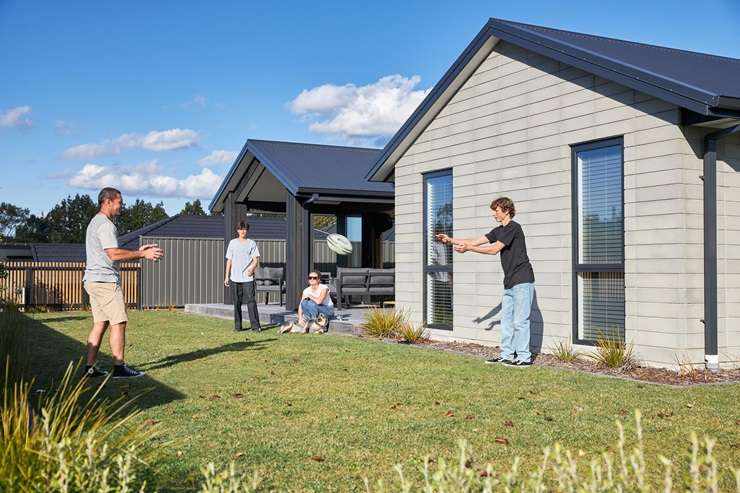Building a new home from scratch takes time. How long – months or more than a year – depends on the type of home, the size, the section, the location and budget.
For a standard home, the actual build should take 20 to 24 weeks, from signing the contract to completion. But the total time spent on a project can stretch much longer thanks to additional steps such as buying the land, getting title, design, and consents. The more complex the project, the longer the timeline.
Every project is different, says Cameron McCallum, Classic Builders regional manager for the Eastern Bay of Plenty. If the buyer owns the land already and has the title and consent, the build should be reasonably fast. “When you sign the build contract, we can start,” says McCallum.
On the other hand, if title and consents are needed, that can add months to the process. At busy times in particular, councils may take longer than expected to grant consents, says McCallum. And the clock is reset every time the council asks questions.
Start your property search
What are the main steps?
1. Buying the section: Some buyers source their own section, while others choose a house and land package from individual or group home builders. They may buy an existing home and knock it down and rebuild. Or they subdivide a section they already own to build a second home.
2. Pre-build: The process from the initial dream of building a new home through to completed design takes time. Home buyers need to go out and research their ideas. They need to source and appoint architects and/or builders who will estimate the costs of the project as well as initial checks of the title and building regulations.
3. Building consent: All new homes need building consent and some will need resource consent as well. If the home is bought off the plan, or from a group or spec builder, the building practitioner – architect, designer, developer, surveyor, planning consultant, engineer, or builder – will have done this already. If the home is build-only or the buyer is going down the architecturally designed route, consents will need to be applied for prior to building work starting. Buyers need to be as near as possible to absolutely sure what they want at this stage. Variations at a later stage could mean applying to amend the consent which could incur additional fees, and costly delays in building.

Build times for a new home can vary so it's crucial you work out a schedule with your builder. This will help you avoid or mitigate costly delays. Photo / Getty Images
4. Building: Once the builder breaks ground on the project, buyers should be looking at around 20 to 24 weeks, according to the New Zealand Certified Builders Association. However, a single-level stand-alone home on a greenfield site is a different proposition to multiple three-storey townhouses on one section, or an architecturally designed home on a rural site or one with difficult topology. Other factors that can affect the build time are: design complexity, site preparation, season, availability of builders and other trades, supply chain issues, council consent and sign-off.
5. Handover: Once the building work is complete and a Code Compliance Certificate (CCC) has been issued, it’s time for sign-off and the handover. That’s when the homeowner officially takes possession of the newly finished home.
6. Final inspection: Prior to handover, homeowners or their building consultant have a final inspection to check the workmanship and identify any problems. All new homes are covered by a 10-year structural warranty and a variety of warranties on the different products used in the build, says McCallum. A good builder will provide aftercare as well, dealing with teething problems.
Among other things, the checklist for the final inspection should include detailed lists of inspection points for the exterior, interior, roofing doors and windows, utilities, walls, paint, flooring, plumbing, bathrooms and electrical.

Once you've got your keys it's time to move in and enjoy your new home. Photo / Classic Builders
- Has the home been built to design?
- Is there any damage or defects on every single surface from the roof to the bathroom floor?
- Do all the doors and windows open and close with ease?
- Are the fixtures and fittings all secure?
- Does water drain correctly from sinks and toilets and from the deck or balcony?
- Have the stove, dishwasher and other appliances been hooked up?
- Does the tapware work without leaking or dripping?
- Are all the power switches working?
- Do drawers and cupboards open and close correctly
- Do the central heating, heat pumps, and/or ventilation systems work?
7. Documentation: At the final handover the builder provides a variety of documentation including the documentation for warranties and a maintenance schedule for the materials, fixtures and fittings, and appliances used in the home. Buyers should ask for copies of supplies lists, as-built plans, specifications, construction records, and certificates for electrical and plumbing.
>> Explore our other OneRoof guides: Buying your first home and Selling your home
* This article was created in partnership with Classic Builders




















































































